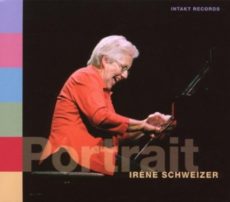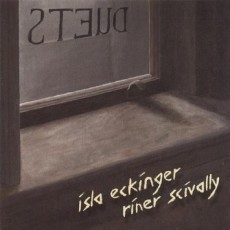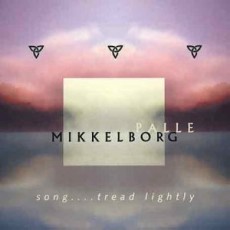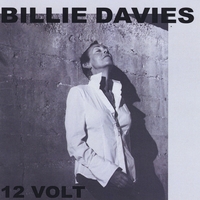
Daily Dose Of Jazz…
Irène Schweizer was born on June 2, 1941 in Schaffhausen, Switzerland. She studied piano and immersed herself in the free improvisation genre but is adept at playing various jazz styles.
She has performed and recorded numerous solo piano performances as well as performing as part of the Feminist Improvising Group with Lindsay Cooper, maggie Nichols, Georgie Born, and Sally Potter. Schweizer has played a series of duets with drummers Pierre Favre, Louis Moholo, Andrew Cyrille, Gunter Sommer, Han Bennink and Hamid Drake.
Irène has performed in trio and quartet sessions with John Tchicai, Evan Parker, Peter Kowald and with Yusef Lateef, Uli Trepte and Mani Neumeier at the Montreux Jazz Festival.. One of her most enduring collaborations is with the improvising musician Rudiger Carl.
Pianist Irène Schweizer continues to perform and record in the the free jazz, avant-garde and free improvisation genres.
![]()
More Posts: piano

Daily Dose Of Jazz…
Isla Eckinger was born on May 6, 1939 in Dornach, Switzerland and played cello as a child, moving to the trombone during his teenage years. After studying trombone at the Conservatory in Basel, he taught himself to play the bass.
As a professional musician Isla made his debut playing with Oscar and Miriam Klein. In the 1960s, he accompanied on tour with Ben Webster, Buck Clayton, Don Byas and Johnny Griffin.
After a move to Munich, Eckinger began working with Mal Waldron, Joe Haider and Philly Joe Jones. From 1970 to 1976 he became an educator, teaching at the Swiss Jazz School while working with Haider, Peter Giger and Heinz Bigler in Group Four for Jazz.
With a new quartet with Waldron, Steve Lacy and Manfred Schoof, Eckinger toured Japan in 1975, and Italy with Chet Baker the following year. By the end of the 1970s he belonged to Wolfgang Engstfeld’s quartet, then worked with Klaus Weiss, Fritz Pauer and also with Dizzy Gillespie.
Mid-1980 saw Isla in Los Angeles, California recording with Chuck Manning. He played with Roman Schwaller and Jimmy Cobb as well as with Charly Antolini, Andy Scherrer and Paul Haag. Double bassist, vibraphonist and trombonist Isla Eckinger transitioned on April 8, 2021.
![]()

Daily Dose Of Jazz…
Palle Mikkelborg was born on March 6, 1941 in Copenhagen, Denmark. Self-taught on trumpet in his youth, he started playing professionally in 1960 and in 1963 joined the Danish Radio Jazz Group, leading it from 1967-1972.
Performing at the Newport Jazz Festival with a quintet helped solidify Palle as a dominant figure on the Danish and international progressive jazz scenes. He has recorded as a leader for Debut, Metronome, Sonet, Storyville, and ECM.
Releasing several solo records, Mikkelborg has also recorded with various co-founded groups, as well as performing sideman duties or arranger on numerous international records.
His most notable international collaborations include the Gil Evans Big Band, the George Russell Big Band, George Gruntz’s Concert Jazz Band, Abdullah Ibrahim, Dexter Gordon, Karin Krog, Gary Peacock, Niels-Henning Orsted Pedersen, Terje Rypdal, Thomas Clausen, Jan Garbarek and many others. With Miles Davis, he composed a suite and produced the 1989 album release Aura.
In 2001 he was awarded the Nordic Council Music Prize. Avant-garde and post-bop trumpeter, composer, arranger and producer Palle Mikkelborg has continued to perform, record and tour.
More Posts: trumpet

Daily Dose Of Jazz…
Billie Davies was born on December 10, 1955 in Bruges, West Flanders, Belgium. An autodidact and naturally talented she was surrounded by music from birth as her mother played the best in jazz and classical music. From the age of ten she was singing in choirs until her voice changed around the age of 22.
A few years later Davies would embark on learning to play the drums and became a professional jazz musician shortly after declining Max Roach’s invitation to attend Berklee College of Music. Her music is an improvisational conversation between musicians and musical instruments.
Billie has played with Leroy Vinnegar, John Handy, Joe Fuentes, Saul Kaye, Michael Godwin, Lee Elfenbein, Drew Waters, Pierre Swärd, Tom Bone Ralls, Manny Silvera, Oliver Steinberg, Daniel Coffeng, Adam Levy and has appeared all over the world.
Drummer, composer, director, arranger and bandleader Billie Davies has been honored as Jazz Artist of the Year at the Los Angeles Music Awards, drums in rhythms of jazz, cool jazz, Avant jazz and avant-garde and continues to mold it into her own neo-humanistic expressionist jazz.
More Posts: drums

Daily Dose Of Jazz…
Andrew Charles Cyrille was born on November 10, 1939 in Brooklyn, New York into a Haitian family. He began studying science at St. John’s University but was already playing jazz in the evenings and soon switched his studies to the Juilliard School. His first drum teachers were fellow Brooklyn-based drummers Willie Jones and Lenny McBrown. Through them, he met Max Roach, nonetheless he became a disciple of Philly Joe Jones.
His first professional engagement was as an accompanist of singer Nellie Lutcher, had an early recording session with Coleman Hawkins and trumpeter Ted Curson introduced him to pianist Cecil Taylor when he was 18. He joined the Taylor unit in 1964 and stayed for about 10 years and eventually performed drum duos with Milford Graves.
In addition to recording a dozen albums as a bandleader, he has recorded and/or performed with David Murray, Irene Schweizer, Marilyn Crispell, Carla Bley, Butch Morris, Reggie Workman, Oliver Lake, Geri Allen, Ahmad Abdul-Malik, Billy Bang, Anthony Braxton, Marion Brown, Walt Dickerson, Charlie Haden, David Murray, Horace Tapscott and the list goes on.
Avant-garde drummer Andrew Cyrille is currently a member of the group, Trio 3, with Oliver Lake and Reggie Workman.
More Posts: drums


